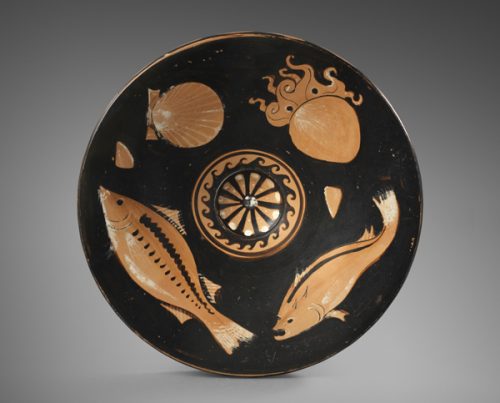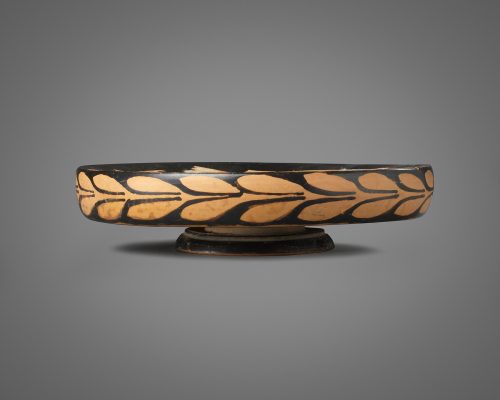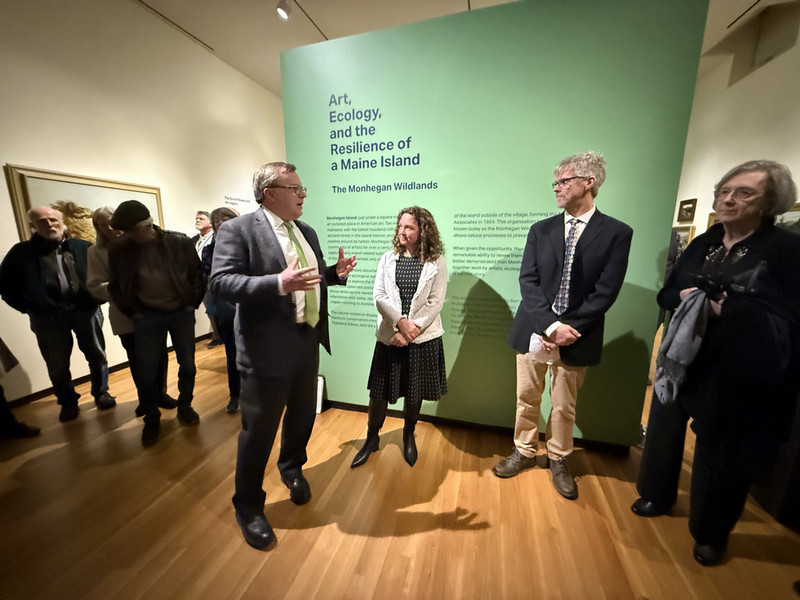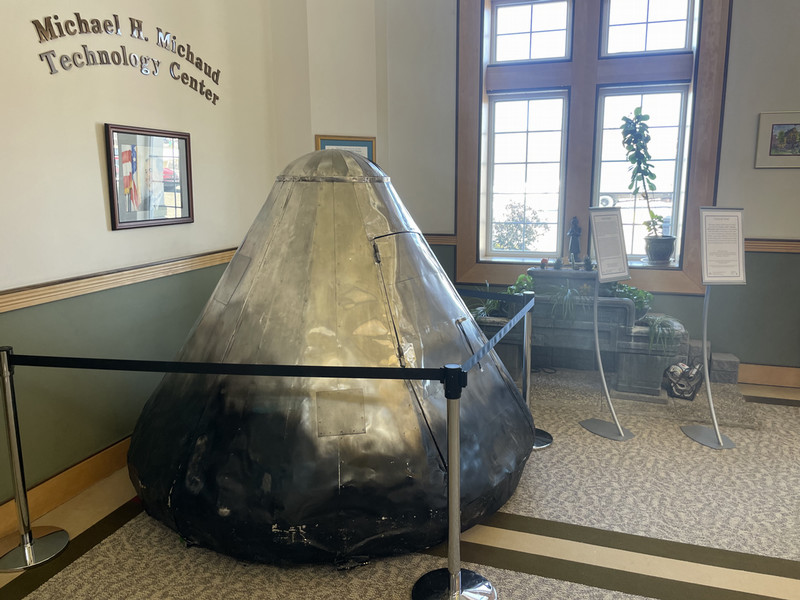Bowdoin College Museum of Art Acquires 4th-Century Fish Plate
By Bowdoin College Museum of Art
The Bowdoin College Museum of Art recently acquired a 4th century BCE Apulian Red-figure Fish Plate for the collection. The addition of this plate strengthens the Museum’s holdings of artifacts from the Greek colonies in southern Italy and Sicily, which include sculpture, pottery and coins. The fish plate is one of the more iconic forms associated with this region’s artistic production and, while the ceramic shape is fairly common, just over 1,000 decorated examples exist in collections today. Fish plates are found in various archaeological contexts that suggest uses connected to dining and meals associated with burial practice. The decorations on the most detailed plates, including this example, provide rare illustrations of Mediterranean sea life. As such, this vessel will serve as subject matter for classes in archaeology, art history, biology, environmental studies, history, religion, and visual arts.
The Museum’s fish plate is a complete (unrestored) example attributed to the “Perrone-Phrixos group.” Arthur Dale Trendall, an eminent authority on ancient south Italian ceramics, considered this group to include the most accomplished of the ancient Greco-Apulian painters. The plate is set on a hollow foot that has a short stem and a ring base. The rim, painted with a laurel-leaf pattern, is turned down and the central circular depression is decorated with an 11-petaled rosette framed by a wave-pattern border. The gently sloping floor between the rim and the central depression provides the canvas for the detailed illustrations depicting “living” maritime species. As a final flourish, the artist applied white and red pigment to add more detail and volume to the figures.

Though ancient artists are known to have taken liberties with taxonomic details, some identifications are possible from the depictions on this plate. The fish appear to be swimming right to left around the vase in a clockwise composition that includes (in order) an octopus, a telline or wedge shell, an anglerfish or monkfish, a drum fish, another telline, and a scallop shell. The inclusion of smaller sea creatures between the larger fish is characteristic of Apulian fish plates, helping to fill the voids and creating a highly decorative effect. All species represented on this plate were part of the diet in the ancient Mediterranean but also could be observed in their native environment, in coastal shallows of the Mediterranean. It is notable that the figures are depicted as living creatures arrayed as if swimming in the sea.
This unique acquisition will add to the depth of the Museum’s antiquities collection and we look forward to sharing it with the public in upcoming exhibitions!



